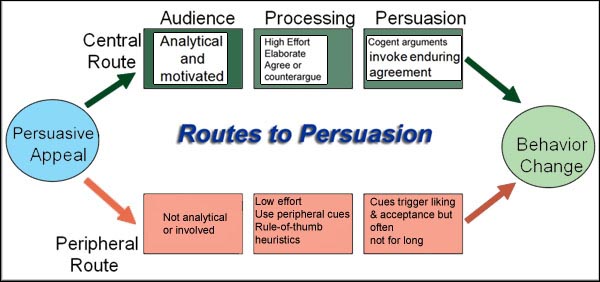








|
• The effect of source credibility (perceived expertise & trustworthiness) diminishes after a month or so. There is a delayed persuasion of the message content after people forget who said it. This phenomenon is called the sleeper effect. • Physical attractiveness increases the communicator's influence & people respond better to messages that come from an in-group member. 2. The message Reasonable or emotional? • You can marry passion & logic in a message to target all the audience. • Well educated, analytical, thoughtful, involved audiences travel the central route of persuasion. Disinterested audiences follow the peripheral route, & are more affected by how well they like the communicator. The effects of good feelings: • Good feeling enhance persuasion! - partly by increasing positive thinking & partly by linking good feelings with the message. The effects of arousing fear: • By evoking negative emotions, a fear arousing message can be potent. 3. The media - how the message is communicated 4. The audience How old are they? People tend to have different social & political attitudes depending on their age, • Life cycle explanation: Attitudes change e.g. become more conservative, as people grow older. • Generational explanation: The attitudes older people adopted when they were young persist largely unchanged; because young people adopt different attitudes now, a generation gap develops. Is their thinking favorable or not? Forewarned is forearmed - if you care enough to counter argue. Distraction disarms counter arguing. Uninvolved audiences use peripheral cues. |
|
Social Psychology Robert C. Gates |
|


